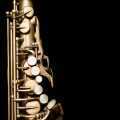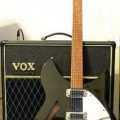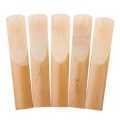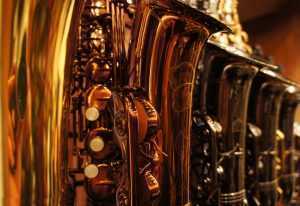 So you’ve been renting a saxophone from your school or a local music store for a couple of years now. You recently decided that you want to get more serious about playing the saxophone, so you feel like it’s about time to invest in a horn of your own. You begin to do a bit of research, but are almost immediately completely overwhelmed by the amount of saxophone brands available. Buying a saxophone is a serious purchase. It’s a fairly big investment, there are numerous options to choose from, and it will potentially last you the rest of your life.
So you’ve been renting a saxophone from your school or a local music store for a couple of years now. You recently decided that you want to get more serious about playing the saxophone, so you feel like it’s about time to invest in a horn of your own. You begin to do a bit of research, but are almost immediately completely overwhelmed by the amount of saxophone brands available. Buying a saxophone is a serious purchase. It’s a fairly big investment, there are numerous options to choose from, and it will potentially last you the rest of your life.
There are several saxophone brands available. Each one of these brands have several different models. Some of these brands and models are still in production and some aren’t. Of course, not all saxophones are created equal. Obviously, some are better than others.
In this article, I will go over some of the most popular modern saxophone brands as well as some vintage saxophone brands, and then I will offer my humble opinions and recommendations. Hopefully this will help ease the process of buying your first saxophone. I will attempt to remain as objective as possible before I offer my totally biased personal recommendations.
Modern Saxophone Brands
Today, there are more saxophone brands available than ever before. Upon doing my preliminary research for this article, I was surprised to discover how many new saxophone brands are available that I’ve never even heard of. It seems as though every music company is building and branding a saxophone of their own.
Here are some of the most popular modern saxophone brands: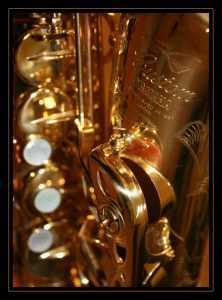
Yamaha: Yamaha sets the standard for many different products, saxophones included. Yamaha is a Japan-based company. Their saxophones are known for their clear tone, accurate intonation, comfortable ergonomics, and solid build quality. They make student, intermediate, and professional models.
Selmer: Selmer is a family-owned company based in France. Selmer saxophones are the choice of many professional musicians. They have been making saxophones for close to a hundred years and are still going strong. Their vintage horns are arguably the best saxophones ever made, but their modern horns are very popular as well.
Yanagisawa: Yanagisawa is an innovative Japan-based saxophone manufacturer. They are not as well-known as Yamaha or Selmer, but their saxophones are among the best. Yanagisawa has a definite presence in the world of professional saxophone players.
Keilwerth: Keilwerth is a popular German-based saxophone manufacturer. They make student, intermediate, and professional saxophones.
Cannonball: Cannonball is a relatively new brass and woodwind manufacturer based in Utah. They hand make professional instruments.
Other Modern Brands: Like I said above, there are many modern saxophone brands available, too numerous to name them all. There are many saxophones being currently produced in China and Taiwan. Some of them are very good: P. Mauriat, RS Berkeley, MACSAX, etc. Some of them are not so good: Jupiter, Vito, Allora, Jean Baptise, Mendini, etc. With these, price is usually a fair indicator of quality.
Vintage Saxophone Brands
An alternative to purchasing a new saxophone is buying a used one. Many times, you can buy a used horn at a fraction of the cost of buying a new horn, without sacrificing any quality. Buying a saxophone used or new is totally up to you. There are many advantages and disadvantages of buying used or new, which I will let you research on your own. Just know that there is no reason a used horn would be any worse than a new horn.
Many of the modern brands I listed above can be purchased used. There are also vintage horns that are available for purchase. A vintage horn is usually thought of as any horn produced before 1980.
Here are some of the most popular vintage saxophone brands:
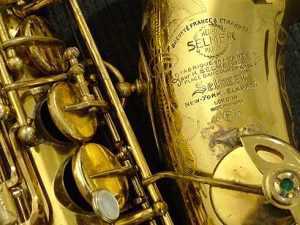
Selmer: I put Selmer in both the ‘modern’ and ‘vintage’ categories because, while their modern saxophones are great, their vintage saxophones, specifically the Mark VI and the Super Balanced Action, are arguably the best saxophones ever produced. Almost every modern saxophone is based on the Mark VI.
Conn: Conn was a US-based manufacturer of band instruments. Their vintage saxophones are known for their huge sound (some say the best saxophone sound), but the ergonomics of their key work are not the most comfortable for some people.
King: King was a US-based manufacturer of band instruments, located in Ohio. Their saxophones were popular among many of the best jazz musicians around the 1940s and 1950s. They have a big sound and good ergonomics.
Buescher: Buescher was a band instrument manufacturer based in Indiana. They have a good quality sound with slightly uncomfortable ergonomics.
Martin: Martin was a band instrument manufacturer based in Indiana. They are one of the most overlooked vintage saxophone brands. They have a nice sound and slightly uncomfortable ergonomics.
Other Vintage Brands: There are a few other relatively well-known vintage brands, such as Buffet, H. Couf, SML, etc. There are also a bunch of “stencil” saxophones (produced by a major manufacturer, but with a different name on the bell), which vary greatly in quality.
Should You Buy New or Used?
As I mentioned above, whether you choose to buy a used saxophone or a new saxophone is totally up to you. You’ll get widely varying opinions on the subject depending on who you ask. Here’s my two cents:
I bought my first saxophone about fifteen years ago. On the recommendation of my teacher at the time, I bought a brand new Yamaha professional model. It was (and still is) a great horn and I played it as my main horn for many years. Now my main horn is a Selmer Mark VI made in 1954. The Mark VI cost about four times what I paid for the Yamaha. That being said, today, the gap in price between buying a vintage horn and buying a modern horn has shrunk significantly. Modern horns’ prices have skyrocketed in the past ten years or so. Modern horns and vintage horns of comparable quality cost about the same today.
Another thing to keep in mind is cost versus value. When you buy something new, it immediately loses value. If you ever decide to resell your horn, a new horn will most likely sell for less than you paid, whereas a used horn may sell for the same or more than you paid. Buying a vintage horn is definitely more “bang for your buck”.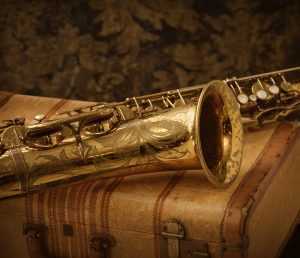
Also, always keep quality in mind. Vintage horns are handmade pieces of art that have stood the test of time. Let’s be completely honest here. If you choose to buy a $150 saxophone off of eBay, you’re buying a piece of junk. There’s no other way to put it. A beginner would start off playing the saxophone by fighting a losing battle and an advanced player will end up very frustrated. Besides that, you’ll end up paying significantly more in money and time for frequent repairs. Believe me; I played a cheap Taiwanese horn for a job every day for six months. These horns are just not the same quality. They don’t sound as good and the metal is often extremely pliable. For a little bit more money, you could get a used Yamaha student model, which is a great quality student horn.
An added note to consider concerning soprano saxes is that vintage sopranos don’t have as spot-on intonation as modern horns. Some are fine, but you should always play test them. Personally, my tenor and alto were both made in the 1950s, while my soprano was made in the 1980s.
Conclusion
The aim of this article was to give a little bit of information about different saxophone brands in order to make the process of buying a saxophone a little less daunting of a task. I hope it did that, and didn’t accidentally complicate things for you even further. The choice of what saxophone brand to buy is completely up to you, but there are a few things you should keep in mind:
- Remember to do your research. I could only go into so much detail in this article. This wasn’t meant to be a shopping guide as much as an introduction to the different saxophone brands. Research each brand on your own. There are many other factors that can affect the sound and value of a saxophone.
- Always try out a saxophone before you buy it. Never purchase a saxophone without playing it first. There are any number of stores that will let you go in and play test their saxophones. There are also many saxophone dealers that will mail you a saxophone for a trial period, usually ranging from one to two weeks. You want to make sure the saxophone has a full tone throughout the full range of the horn, that it has good intonation, and that it feels comfortable to you (or at least feels like something you could adjust to).
- Don’t be impulsive. Maybe you believe in love at first sight. If you absolutely fall in love with the first saxophone you try out, that’s fine. But, I would recommend playing a couple others before making your final decision, just to make sure. Some saxophone players spend months finding the perfect horn. It’s not unusual for someone to play twenty or more saxophones before making their final decision.
Best of luck and happy shopping. It should be a fun process.


